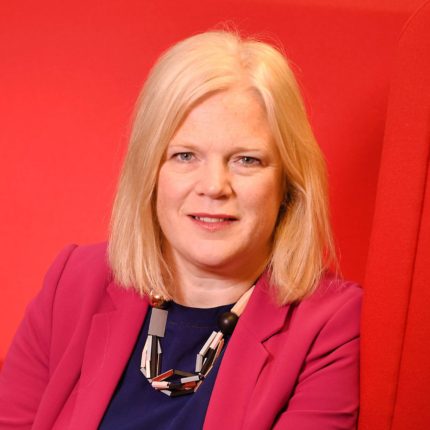UCAS has today released data – following a pause in publication out of respect for the passing of Her Majesty The Queen – providing an update on Confirmation and Clearing 28 days after JCQ results day.
This marks the most comprehensive view of activity to date – in a typical year, 99 per cent of acceptances have occurred by this point (excluding acceptances reported in Record of Prior Acceptances data).
While this cycle felt like a return to normal, with exam results being the key to progression, in many ways it marked a significant change in the competitive landscape that is likely to be with us for the next decade. The media interest in Clearing also reached unprecedented levels, with scrutiny starting months earlier, and continuing way beyond SQA and JCQ results days. Throughout this scrutiny, five key questions have emerged.
Is this a normal Clearing or a Covid-19 aftermath?
In total, just over half a million students have been placed in higher education – the highest figure for a non-Covid year. Within this, we have seen a record number of 18-year-old students placed from the UK. While this represents a slight decline in the entry rate compared to 2021, it is 3.5 percentage points higher than 2019, the last time exams were sat, and remains on an upward trend. The more we learn about 2022, the more apparent it is that 2021 was a highly anomalous year.
Nearly 60,000 students have been accepted via Clearing – 9 per cent of the total cohort, compared to 10 per cent in 2019. And the choices on offer are comparable to previous cycles, with 30,000 courses available at peak.
We know a significant number of students have used Clearing to revisit their choices. In 2019, UCAS introduced “Decline my Place”, making it easier for students to exercise choice. This year, over 14,000 UK 18-year-olds used this functionality to secure a new place, with the vast majority of these applicants going to a choice within the same or higher tariff grouping.
Clearing has evolved significantly over the last decade. It is no longer a scramble for places for students that have lower than expected results – it is now a fundamental part of the cycle that offers choice and flexibility to all students – including those who wish to change course or institution. New tools like Decline My Place and Clearing Plus have transformed how students exercise choice. Clearing is now unrecognisable compared to how it used to be. It has lost its stigma.
Are there really thousands of students still fighting for a place?
The short answer to this question is no. Those that navigate the daily UCAS dashboards (which is really easy to do – I often dip in) will know that each cycle, there are relatively large volumes of students that are “Free to be placed in Clearing”. This pool is made up of students that have previously submitted a UCAS application, and for varying reasons do not hold a firm place. For example, about a third in any given cycle will be international and have likely secured a place in another country – signaling how competitive the global market is. Equally, a large proportion are mature students, who have likely gained employment.
A big focus this year has been on the 18-year-old “free to be placed in Clearing” cohort – about 40,000 students, 21,000 of which were placed into this position on JCQ results day. The majority of this group either withdrew from or did not respond to an offer made during the main cycle.
Overall, nearly 98 per cent of all UK 18-year-old applicants received at least one offer, a record high – so the 40,000 students above had options available to them but, as consumers, chose not to follow this pathway. This may be due to a late change of mind, or simply not securing the offer they wanted. Each cycle, 60,000 – 70,000 students (half of which are aged 19) reapply during the following cycle – and our survey data suggests that once again some of these students will contribute to the next cycle .
Of those students that had the strongest intent to progress – the 21,000 entering Clearing on results day – nearly two thirds have secured a new choice through Clearing, which is broadly comparable to previous cycles. Choice continues to exist for the approximately 9,000 applicants remaining, whether they wish to find a place in Clearing, apply next year, or change pathways towards an apprenticeship – which is as expected and a feature of every cycle. UCAS supports students across all these routes.
Are international students taking the place of UK students?
Again this year we have heard from many commentators that international students have taken places that would otherwise be taken by UK applicants. UK higher education remains globally attractive, with nine out of ten international applicants viewing the UK as a positive place to study. Overall, 12 per cent of accepted students are from outside the UK. This number has fluctuated slightly over recent years, and is lower than 2019 (14 per cent), with 9,000 fewer accepted international students.
Within this, demand continues to be driven by China, with a 23 per cent increase in accepted applicants from this country. The number of accepted applicants from China has doubled since 2018, and we have more accepted students from China than we do Northern Ireland – the number will most likely overtake Wales in the next few cycles. However, this will be challenged by an increasingly competitive global environment, where the UK has lost market share over the last decade.
Overall, we haven’t seen any evidence of international students displacing their UK counterparts. Offer making to UK 18-year-olds is at a record high, and they remain an in demand group.
As we emerge from the pandemic, have disadvantaged students been left behind?
A consistent story throughout the pandemic has been the disproportional impact on disadvantaged students – we now have 23 per cent more 18-year-old students from the most disadvantaged areas placed in higher education compared to 2019, along with a narrowing of the POLAR4 Q1 to Q5 entry rate ratio from 2.31 in 2019 to 2.12 in 2022. This is all the more impressive given many feared we would see a decline.
Growth has continued in 2022, with a 5 per cent increase in placed applicants from the most disadvantaged backgrounds this cycle. While this has been a more competitive cycle, we have seen the interests of these students maintained. For example, the overall offer rate fell by 4 per cent for UK 18-year-olds in 2022, but this reduction was felt least for these students – even when controlling for the type of choices they make.
We expect this positive story to continue in the short term. The 2023 entry cycle marks a significant step forward in supporting students from specific cohorts. For the first time, the UCAS application will include questions that will allow students to flag whether they are a carer, estranged, have parenting responsibilities, from a UK Armed Forces family, a UK Armed Forces Service leaver or veteran, and whether they are a refugee, asylum seeker or have limited leave to remain in the UK.
This change builds on the introduction of verified free school meals (FSM) data into the application in 2021, which contributed to a record entry rate for this cohort. In addition, a new self-declared FSM question will help to capture students whose data may not be included in these databases – for example, those who are not applying straight from school.
However, in the medium term, we expect competition to intensify. In this more competitive environment, there is a risk that disadvantaged students are disproportionately impacted. Specific focus needs to be given to the nature of competition during this period and how this may impact on those from disadvantaged backgrounds.
What does this mean for future years?
UCAS forecasts that by 2026, we could see up to 1 million undergraduate applicants. The 2022 cycle has given us an insight into what this may look like, with the reduced offer rate from highly selective universities and an increased use of Clearing.
Next year, we expect to see the application rate continue to grow, as will the total number of 18-year-olds in the population. Therefore, we expect more applicants, with grades returning to pre-pandemic standards. We predict this environment will exist for the remainder of the decade.
UCAS continues to highlight this increase in demand, driven by the growing 18-year old population and continued global attractiveness. It is vital that, as a sector, we recognise this growing competition and the impact it will have on future cohorts. The 2026 cohort is today’s Year 10 in school, and therefore the advice and guidance we give to these students needs to reflect the changing dynamics.
As a result, UCAS will publish further insight on this journey to a million early next year, bolstering our analytical expertise and knowledge, and allowing us to continue supporting students’ aspirations by making them aware of all the options available to them.
Data visualisations by David Kernohan.













